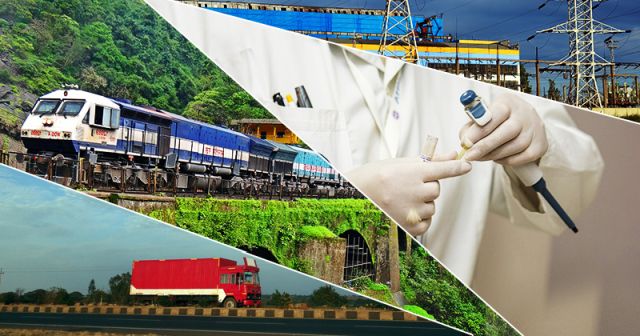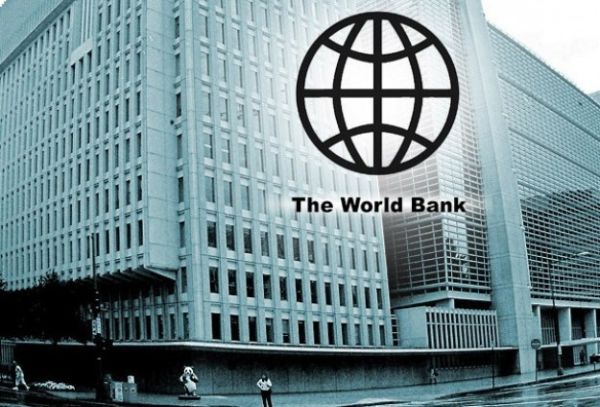
by Editor | May 25, 2021 | Opinions
 By Taponeel Mukherjee,
By Taponeel Mukherjee,
Real per capita GDP, stock market indices and consumption trends in India are currently interesting. Even as real GDP at an aggregate and per capita basis have broadly trended higher, equity market valuations have fluctuated. Amidst the noise of market data, it is often easy to forget that some of the best investment opportunities arise when market valuations arent quite at their peak.
The single most significant takeaway is that as real GDP has trended upwards, the equity market, in real terms (inflation adjusted), has moved higher with considerable volatility. What many view as market downturns are opportunities to build and scale value-creating businesses.
Market downturns in public markets (equity markets) invariably compress valuations in private markets as well. One way to generate returns from the growing GDP per capita over the next two decades is through creating a valuable platform company to aggregate assets. Such a strategy is especially relevant when high-quality assets can be acquired in a market downturn.
At a fundamental level, a platform company would be one that uses acquisitions to build a business. Capital allocation is the principal function of any company, and in the case of a platform structure, the capacity to inorganically grow the business through meaningful acquisitions is the core objective.
Two fundamental factors determine the success of the platform. Firstly, the pricing environment needs to be one that is in some way a “buyer’s market”, i.e. valuations provide for attractive acquisitions. Market downturns are usually such an environment that is conducive to attractive pricing for deals. The ability of the platform structure to make attractive acquisitions is vital.
It is important to note that the platform company making purchases provides sellers with liquidity in a market downturn, thereby creating liquidity in relatively volatile market conditions. Even in situations without a market downturn, attractive deals are available through sourcing in the private markets or acquiring assets from companies with impaired capital structures.
The second most important factor for a platform structure is to get access to relatively low-cost capital for a longer duration. A healthy balance sheet for the parent business and focus on cash-flow rich businesses is critical in this regard.
A platform business in India has the advantage of one of the fastest-growing economies in the world. To leverage the growth in the economy it will be critical to choose products or services where the product or service meets two main criteria. One, extremely low-risk of substitution; and, two, low technology risk in the product.
Low-risk of substitution is that the need for the product will not disappear in the near term. For example, pharmaceutical products to manage chronic diseases will be a requirement for the foreseeable future. While technology as a backbone will be crucial to scaling the business, low-technology risk implies that the product by its very inherent nature isn’t at risk of technological obsolescence. An example would be the demand for baby foods in the FMCG space.
Using successful templates from other economies, the products and services offered for a platform structure can be for both B2C and B2B businesses. Such platforms usually work better in relatively fragmented markets. The ability to acquire relatively smaller firms from both private and public markets provides an opportunity to scale a business to command a higher valuation multiple relative to a smaller company.
Besides operational efficiency, the strategy that a platform company adopts in India will be dependent on factors such as whether the acquisitions are for regional expansion or a broadening of the product and service suite offered by the platform company. The critical determinant being: How the sum of the parts adds up to create more value than the individual components.
For instance, a successful consumer credit company in one region can create a platform for growth in other regions utilising the existing successful business model. Alternatively, a company selling baby food can generate greater value by acquiring companies that sell products related to baby care.
At a fundamental level, capital allocation through mergers and acquisitions is the cornerstone of creating a successful platform structure. In the Indian context, public market valuation volatility that compresses valuations provides long-term investors with entry points to develop platform companies to leverage the India growth story.
(Taponeel Mukherjee heads Development Tracks, an infrastructure advisory firm. Views expressed are personal. He can be contacted at taponeel.mukherjee@development-tracks.com or @Taponeel on Twitter)
—IANS

by Editor | May 25, 2021 | Economy, Finance, Markets, News
 By Rohit Vaid,
By Rohit Vaid,
Mumbai : The second-quarter earnings result season, along with the direction of foreign fund flows and macro-economic data points, are expected to determine the trajectory of key Indian equity indices next week.
Market analysts said that crude oil prices coupled with rupee’s strength against the US dollar will also influence the market moves.
“The markets next week would get some sentimental support from stability in INR and crude oil prices,” Devendra Nevgi, Founder and Principal Partner, Delta Global Partners, told IANS.
“The earnings season would be closely tracked as a factor to mitigate some of the volatility in the markets.”
Companies like ACC, Cyient, Reliance Industries, Infosys, Hero MotoCorp, IndusInd Bank and UltraTech Cement are expected to announce their Q2 earning results next week.
“Currently, broader markets look attractive while investors may seek more clarity from upcoming quarterly results,” said Vinod Nair, Head of Research at Geojit Financial Services.
“The continuity of this trend largely depends on stability on bond yields and INR. However, worries about US Fed rate hike, US-China trade dispute and political uncertainties in India on account of upcoming state elections may impact the sentiment in the short-term.”
Apart from the Q2 results, investors will look forward to the macro-economic data points of WPI (Wholesale Price Index) and India’s trade figures.
The Central Statistics Office (CSO) is slated to release the macro-economic data points of WPI on October 15.
“The trade deficit number due next week would be crucial for the INR moves,” Nevgi said.
On a weekly basis, the rupee closed at 73.56 last Friday, strengthening by 21 paise from its previous week’s close of 73.77 per greenback.
In terms of investments, provisional figures from the stock exchanges showed that foreign institutional investors sold scrips worth Rs 8,335.12 crore last week.
At present, outflows in just the nine trading sessions in October have reached over Rs 17,000 crore.
This has been one of the worst months in over a decade in terms of fund outflows.
On technical charts, the National Stock Exchange (NSE) Nifty50 remains in an uptrend as it has closed at new life highs.
“Technically, while the Nifty has bounced back smartly, the intermediate trend remains down,” HDFC Securities’ Retail Research Head Deepak Jasani told IANS.
“The downtrend is likely to continue once the immediate support of 10,138 points is broken. Crucial resistances to watch on the upside are at 10,492-10,605 points. A break of 10,866 points would change the trend of the Nifty.”
Last week, both the key Indian equity indices — S&P Bombay Stock Exchange (BSE) Sensex and the NSE Nifty50 — came in for some rough weather due to global worries over high crude oil prices and US interest rates during the period, but managed to catch the upside in the final session of trade.
The market swung widely with major losses of over 2 per cent in just one session — thereby pulling stock prices and the Indian currency lower.
Notwithstanding the general downturn, a timely plunge in crude oil prices, attractive valuations and liquidity infusion by the Reserve Bank of India (RBI) lured investors back to the Indian market.
Consequently, the S&P BSE Sensex closed at 34,733.58 points, up 353.54 points or 1.02 per cent from its previous close.
Similarly, the wider Nifty50 of the National Stock Exchange also made gains. It closed at 10,472.50 points, up 156.05 points or 1.51 per cent from the previous week’s close.
(Rohit Vaid can be contacted at rohit.v@ians.in)
—IANS

by Editor | May 25, 2021 | Opinions
 By Taponeel Mukherjee,
By Taponeel Mukherjee,
The need for infrastructure creation in India is now being widely debated and analysed. It would be prudent to try and better understand how infrastructure creation contributes to the economic well-being of a nation. Some of the fundamental questions that come to mind are: How much does infrastructure creation matter for an economy? What “multiplier effect” does infrastructure have?
Given the massive scale of infrastructure projects and, consequently, the public and private investment in such projects, it is worthwhile reiterating the economic, financial and social benefits of infrastructure creation. A better idea about the benefits that accrue from assets helps in making optimal decisions.
The link between infrastructure and economic growth has long been recognised. In a recent paper, titled “Growth and Infrastructure Investment in India: Achievements, Challenges and Opportunities”, Aswini Kumar Mishra, Kunapareddy Narendra, and Bibhu Prasad Kar have yet again established that a solid link between infrastructure and economic growth exists.
They find that not only do infrastructure investments have a “huge impact on national and local development, but also exhibits a very high rate of return, even compared to other investments, perhaps due to its spill-over or externality effects”. Two key takeaways from the paper are the “statistically significant” positive impact on growth that infrastructure investments have and the positive correlation among the various infrastructure sectors.
The second point implies that, for example, better transportation infrastructure helps the economy not just by contributing to growth directly, but also through assisting storage infrastructure in delivering better returns and eliminating wastage of goods. Warehousing infrastructure can add more value in an environment where the transportation linkages to the warehouses improve, and vice versa.
The ability to create great economic value from land at a significant distance from the centre of consumption depends on not just creating warehouse or light manufacturing infrastructure or growing crops on the land, but also on the ability to create facilities to transport goods so produced in the area to the consumption point. This ability to generate value through the “network effect” of infrastructure to create positive linkages between various assets is a crucial component to maximise the economic, financial and social value creation.
In the paper “IFC Economics Notes 1, The Impact of Infrastructure on Growth in Developing Countries”, Antonio Estache and Gregoire Garsous have some additional interesting takeaways. They maintain that the poorer a country, the more infrastructure matters to economic growth; but not surprisingly, they also conclude that the weaker the institutions (legal and administrative frameworks) in a country, the lower the growth payoff from infrastructure investments.
For an economy such as India, in which there is socio-economic movement as a significant part of the population continues to rise out of poverty to form the new middle class, the study points out the ability of investments to create infrastructure that the new middle-class entrants can utilise to improve their lives. Credible institutions, credible policies and an effective conflict-resolution mechanism matter more than ever in this context.
For the country to truly create the infrastructure that contributes to economic growth, strong institutions will be essential. In essence, “hard” infrastructure such as airports, seaports, railroads, telecom towers, power transmission networks and renewable energy can be created at a rapid pace with the optimal economic dynamics only when the so-called “soft” infrastructure of a robust regulatory regime is in place and fully functional.
While the direct impact of high-quality infrastructure is one that gets attention, the indirect advantages and “network effects” of infrastructure assets do not get as much attention, perhaps because they are harder to quantify. That said, finding the “correct” pace of infrastructure creation while working under the various constraints of regulations, financing and availability of skills is crucial.
While it is true that rapid infrastructure asset creation is needed, it is equally true that the necessary financing facilities must match the pace of such asset creation. It is essential that new assets are created with robust financing structures that can sustain over long periods of time. The recent issues in the infrastructure sector suggest that though avoiding low-quality assets is important, but it is equally important to avoid good assets funded using poor “capital structures”. Infrastructure assets do add significant economic value if countries can find the right balance between infrastructure creation and ensuring sustainability of financing.
(Taponeel Mukherjee heads Development Tracks, an infrastructure advisory firm. Views expressed are personal. He can be contacted at taponeel.mukherjee@development-tracks.com or @Taponeel on Twitter)
—IANS

by Editor | May 25, 2021 | Banking, Economy, Finance, Markets, News
 New Delhi : The World Bank Group (WBG) on Friday approved its largest country program for India with a likely assistance of $25-30 billion by fiscal 2021-22 to help India’s transition to a higher middle-income country.
New Delhi : The World Bank Group (WBG) on Friday approved its largest country program for India with a likely assistance of $25-30 billion by fiscal 2021-22 to help India’s transition to a higher middle-income country.
“With a fast growing economy, global stature, and its unique experience of lifting the highest number of poor out of poverty in the past decades, India is well-positioned to become a high middle-income country by 2030,” World Bank South Asia Vice President Hartwig Schafer said.
The WBG Board endorsed a new Country Partnership Framework (CPF) for India aimed at supporting India’s transition by addressing its key development priorities — resource efficient and inclusive growth, job creation and building its human capital.
“The Group expects to deliver $25-30 billion during this CPF period, ending in FY 2022,” the multilateral lending agency said in a statement.
India, which has strong collaboration with Group’s institutions, is the largest client of International Bank for Reconstruction and Development (IBRD). As of mid-September 2018, total World Bank assistance stood at $27.2 billion representing 104 projects.
At the end of July 2018, International Finance Corporation’s (IFC) India portfolio contained 281 projects, amounting to a committed exposure of $6.4 billion.
“This CPF charts a path for how the World Bank, IFC and MIGA (Multilateral Investment Guarantee Agency), will leverage their relative strengths to deliver stronger development outcomes for this dynamic country, half of whose population is under the age of 25,” Schafer said.
India’s Economic Affairs Secretary S.C. Garg complemented the bank for aligning the CPF with India’s development and investment objectives, the statement said.
The WBG will focus on promoting a resource efficient growth path, mainly in the use of land and water, to remain sustainable; enhancing competitiveness and job creation; and investing in health, education and skills to improve human capital.
It will also address the challenge of air pollution, jobs for women, raising the resilience of financial sector and investing in early years of children’s development. It will harness new technology in all spheres.
The CPF highlights the shift from a “lending” to a “leveraging bank”, emphasizing the growing potential and need to draw in capital markets in the financing of development priorities, the World Bank statement said.
Complementing transformational national programs, the bank will also develop strategic state partnerships to address state-specific development priorities.
“The future of India lies in the states of India. The country’s transition to high middle-income status will be determined in large part by the effectiveness of India’s federal compact,” said Junaid Ahmad, Country Director, World Bank India.
The CPF also emphasises on India’s global leadership role in promoting renewable energy and disaster resilient infrastructure development through its “Lighthouse India” initiative. India’s experience will help countries in Africa and Central Asia, it said.
—IANS

by Editor | May 25, 2021 | Banking, Corporate, Corporate finance, Corporate Governance, Economy, Finance, News, Politics
 New Delhi : The BJP on Wednesday attacked the Congress-led UPA government for blindly giving loans and weakening the banks due to which their losses increased from Rs 18,000 crore to Rs 53,000 crore, and said the NDA government brought transparency and forced people to repay their loans.
New Delhi : The BJP on Wednesday attacked the Congress-led UPA government for blindly giving loans and weakening the banks due to which their losses increased from Rs 18,000 crore to Rs 53,000 crore, and said the NDA government brought transparency and forced people to repay their loans.
“Swachh Bharat Mission of Prime Minister Narendra Modi is not restricted only to the cleanliness of courtyards but is also about the cleanliness in our economic system,” Union Minister Piyush Goyal told a press conference here.
The Bharatiya Janata Party (BJP) leader said that after assuming the office in 2014, the Modi government inherited an extremely fragile banking sector.
“But the Prime Minister and Finance Minister Arun Jaitley took a wise decision not to bring any such white paper and they responsibly ran the government and brought sustainable solution to only strengthen the economy,” Goyal said.
Slamming the previous United Progressive Alliance (UPA) government for giving loans without doing the fact-check of projects, Goyal said: “The UPA government started distributing loans from 2006 and the procedure went on till 2014. The bank losses increased from Rs 18,000 crore to Rs 53,000 crore in those years.”
“Due to blindly giving of loans overcapacity was created,” he said.
Citing example of the Indian Bank, Goyal said: “Same situation of the non-performing assets (NPAs) was prevalent when Atal Bihari Vajpayeeji’s government had come to power. And at that time, he brought the transparency and the Indian Bank is running in profit.”
“And today, we have also brought transparency in the NPA loans and tried to resolve the entire mess that Congress gave us,” he said.
Attacking the Congress-led government, Goyal said: “UPA blindly gave out loans and weakened the banks, but the Modi government ushered in transparency and forced all the responsible individuals to repay the loans.”
“In case they couldn’t repay the loans, we tried to resolve through Insolvency and Bankruptcy Code,” he said.
The Railway and Coal Minister also said that during the UPA government, a lot of big people took loans without taking into account the responsibility that comes along with it.
“But it is Modi government which has acted tough with these people and forced them to pay back,” he said.
Goyal further said that the strictness of the government also led to the implementation of the Fugitive Law, under which the properties of the defaulters are attached.
This is the first government which has taken strict action against the rich people to repay loan, he underlined.
Citing the achievements of his government, Goyal said: “Our government implemented the Benami Act. We brought GST instead of 40 different taxes,” the BJP leader added.
—IANS





